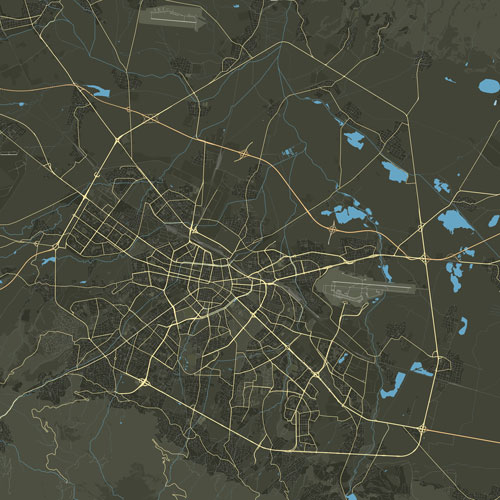The Bulgarian Revival, also known as the Bulgarian Renaissance, marked a significant period in Bulgarian history characterized by a resurgence of national identity, cultural awakening, and aspirations for independence. This revival period began later compared to Western Europe due to the prolonged Ottoman rule over Bulgaria and the Balkan Peninsula. However, it gained momentum in the 18th and 19th centuries as Bulgarians began to assert their rights and pursue economic, cultural, and political progress.
The process of revival encompassed various aspects of Bulgarian society, including economic development, cultural advancement, and aspirations for ecclesiastical and educational autonomy. The spread of commodity-money relations and the desire for economic progress contributed to the awakening of Bulgarian national consciousness.
One of the defining moments of the Bulgarian Revival was the publication of the “History of Slavonic Bulgaria” by Paisiy Hilendarski in 1762. This work played a crucial role in fostering a sense of national identity and pride among Bulgarians, laying the foundation for further cultural and intellectual development.
The Russo-Turkish War of 1828-1829 and the Crimean War of 1853-1856 played significant roles in catalyzing the Bulgarian Revival. These conflicts led to material improvements in Bulgaria and raised Bulgarians’ self-esteem. Additionally, the formal reforms imposed by European powers on the Ottoman Empire following these wars created opportunities for cultural and educational advancement within the Bulgarian territories.
Overall, the Bulgarian Revival was a multifaceted movement that encompassed economic, cultural, and political dimensions, ultimately paving the way for Bulgaria’s eventual independence in the late 19th century.
Jovan Rajić, a Serbian historian with Bulgarian ancestry on his father’s side, made significant contributions to Slavic historiography with his work “History of different Slavic nations, mostly Bulgarian, Croatian, and Serbian,” published in 1794. This influential work provided valuable insights into the history of various Slavic peoples, particularly Bulgarians, Croatians, and Serbians.
Rajić’s comprehensive study served as a foundational text for subsequent historiographical works, including those by Atanas Neskovich and Petar Sapunov. These later historians likely drew upon Rajić’s research and analysis to further explore and document the history of the Slavic nations, contributing to the broader understanding of Slavic heritage and identity.
Rajić’s pioneering efforts in documenting the history of the Slavic peoples, including Bulgarians, Croatians, and Serbians, helped preserve and disseminate knowledge about their cultural, political, and social development. His work continues to be recognized for its significance in shaping Slavic historiography and fostering a deeper understanding of the shared history and experiences of these diverse peoples.
In 1854, Dobruja was home to a diverse array of ethnic groups, as noted by Noyce. He observed that at the main crossing points of Bulgaria, various races mingled freely, creating a vibrant and multicultural environment. Noyce described scenes where Jews, Greeks, and Armenians interacted with Turks, Bulgarians, and other ethnic groups.
He depicted a colorful tapestry of cultural exchange, where individuals from different backgrounds coexisted and interacted. Noyce mentioned encounters with Nizams, Egyptians, Arnauts, mountaineers from Asia, Arab sheikhs, warriors, dervishes, Circassian chieftains, and other groups.
Furthermore, the presence of French, English, Hungarian, and Polish officers added to the diversity, contributing to a rich mosaic of nationalities in the region. Noyce’s observations highlight the multicultural nature of Dobruja during this period and underscore the complex interplay of ethnicities and cultures in the area.
Georgi Stoykov Rakovski is indeed revered as the pioneer of the modern Bulgarian national liberation movement against Ottoman rule. His efforts in organizing rebellions, creating secret societies, and laying the groundwork for a future Bulgarian Republic were instrumental in inspiring resistance among his compatriots.
In August 1841, Rakovski spearheaded the Second Braila Rebellion, which aimed to challenge Ottoman authority by planning to transfer two detachments across the Danube from Braila and Galats. Despite facing discovery by Ottoman authorities and receiving a death sentence, Rakovski managed to evade capture by utilizing a Greek passport to secure his extradition. Subsequently, he escaped and went into hiding.
With the outbreak of the Crimean War in 1853, Rakovski seized the opportunity to further his liberation efforts. Alongside a group of fellow Bulgarians, he established the Secret Society in Svishtov, tasked with fundraising for liberation and gathering intelligence on Ottoman troop movements for the Russian military command. The society adopted the tricolor flag—white, green, and red—as the symbol of the future Bulgarian Republic.
In June 1854, Rakovski organized a small troop and traversed the Eastern Stara Planina, attempting to establish contact with Russian forces south of the Danube. Although the Russian army withdrew later that autumn, Rakovski persisted in his endeavors. In 1861, he formulated the “Plan for the Liberation of Bulgaria” and the “Statute for a Provisional Bulgarian Authority in Belgrade,” laying the groundwork for future governance.
In 1862, Rakovski founded the First Bulgarian Legion in Belgrade, which participated in battles against the Turkish garrison of the Belgrade fortress Kalemegdan, marking a significant step in the struggle for Bulgarian liberation. Georgi Stoykov Rakovski’s visionary leadership and tireless efforts played a pivotal role in galvanizing the Bulgarian people and paving the way for their eventual liberation from Ottoman rule.

